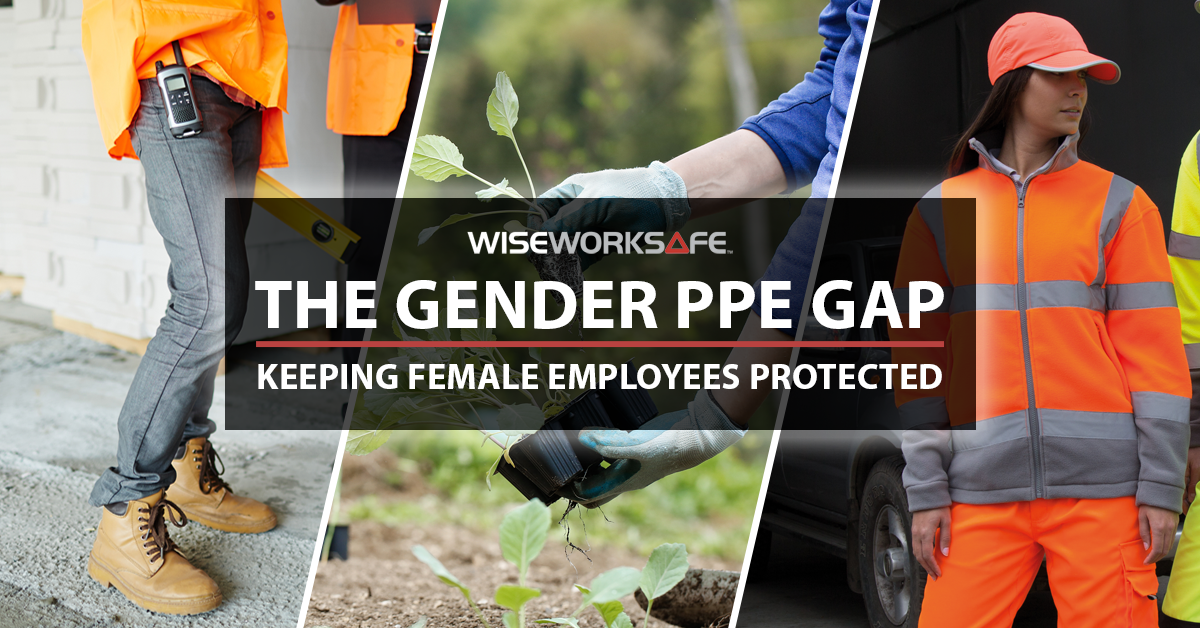Originally published 14 August 2017
Updated 12 April 2020
The Gender PPE Gap: The Case for Women’s Workwear
With a RICS (Royal Institution of Chartered Surveyors) study finding that almost a third of women in construction in the UK believe their career has been held back due to inherent sexism, the construction industry is continuing to face an equality crisis.
More surprising, however, are the findings of a recent TUC (Trades Union Congress) report, which showed that the gender gap goes beyond pay and is not unique to the construction industry. This report highlighted a large ‘gender PPE gap’, with only 29% of females surveyed being provided with personal protective equipment (PPE) purposely designed for women.
Whilst TFL (Transport for London) and BAM Nuttall have taken major steps to provide appropriate PPE for women, many companies have not. In most cases, this is due to a lack of knowledge surrounding the differences between male and female PPE. In other cases, however, it is simply due to a refusal to increase investment.
Are Employers Responsible for Providing PPE for Women?
In 1992, the HSE (Health and Safety Executive) introduced the Personal Protective Equipment at Work Regulations. Under these regulations, employers are responsible for the provision and use of personal protective equipment to ensure adequate protection against health and safety risks in the workplace.
Under regulation 4, every employer must ensure that a suitable standard of PPE is provided to employees who may be exposed to health and safety risks. The only exception to this is where such risks have been adequately controlled by other means which are equally or more effective.
Having the equipment available on work premises is not enough to fulfil an employer’s responsibility. They must also ensure that any necessary clothing and equipment are readily available and clear instructions are provided to employees informing them how to obtain and use them.
As outlined in section 9 of the Health and Safety at Work Act 1974, the employer cannot charge employees for mandatory PPE that is used solely at work. Further sections dictate who is responsible for the ongoing maintenance of such clothing and equipment, which in turn affect the tax implications of staff clothing.
How Do You Assess the Suitability of PPE?
To understand the legal issues surrounding the gender PPE gap, you must consider the five questions asked by the HSE to determine the suitability of personal protective equipment. These questions are:
- Does the PPE protect the wearer from the risks and take account of the environmental conditions where the task is taking place?
- Does using PPE increase the overall level of risk or add new risks?
- Can it be adjusted to fit the wearer correctly?
- What are the needs of the job and the demands in place on the wearer?
- If someone wears more than one item of PPE, are they compatible?
Number three questions how well the PPE fits the individual. In some cases, such as with protective headwear, a good fit is achieved through adjustable straps. In the case of gloves and footwear, however, scope for adjustment is minimal, and correct size and fit are required to ensure suitability for women. Ill-fitting workwear can cause accidents if, for example, loose or baggy garments were to get caught in machinery. In many cases, women's workwear, that is clothing that has been designed specifically to fit female workers, will be the best way to ensure a correct fit.
Is Women’s PPE Readily Available?
Up until recently, there have been limited female-specific alternatives, and simply downsizing equipment designed for men has been the common solution. Since awareness of this issue has improved, manufacturers are increasingly developing PPE designed specifically for females.
This includes manufacturer V12 Footwear, who recently released women’s safety footwear to alleviate the problems many women face within construction and engineering industries. WISE Worksafe is proud to be launching V12’s Challenger IGS ladies safety shoes and Intrepid IGS ladies safety boots this month, which are built to fit the female foot shape perfectly.
Other protective clothing and equipment for women is also becoming more readily available, significantly reducing the challenge previously faced by employers when providing for female staff.
How Can You Combat the Gender PPE Gap?
Combating the gender PPE gap is the combined responsibility of business owners, health & safety officers, procurement managers and HR personnel. To achieve a speedy and cost-effective fix, however, working together with your employees and supplier is pivotal.
At WISE Worksafe, we believe there are three simple steps which require the input of your H&S, HR and procurement teams, as well as female employees themselves. These steps are:
- Work with your HR team to understand the challenges female employees currently face with their PPE (e.g. gloves being too large, high visibility jackets being baggy or footwear offering little ankle support.)
- Partner with a supplier who provides personal protective equipment for women.
- Educate your procurement team as to the needs of your team, and ensure they purchase gender-specific PPE within your existing budget.
Why is it so important for your business to provide the correct PPE for all your staff? PPE that fits correctly and provides an adequate level of protection will not only keep your staff safe but it will make them feel valued and consequently, morale and performance will be increased. There will be far fewer risks and accidents. Providing PPE for women may result in further investment in the short term, but the benefits will far exceed the cost.
Do you need help assessing the PPE needs of your business? Are you looking to invest in women’s workwear and PPE? WISE Worksafe has been advising and supplying businesses with high-quality workwear and safety clothing for over 40 years. Let us help you find the items you need to keep your team safe and boost business.
 VIEW BASKET
VIEW BASKET






